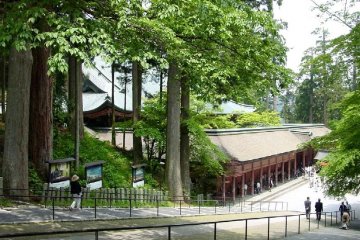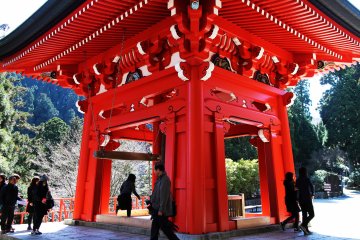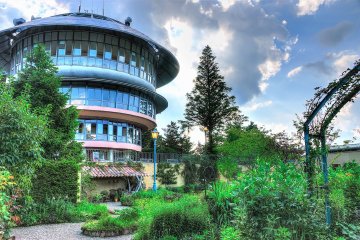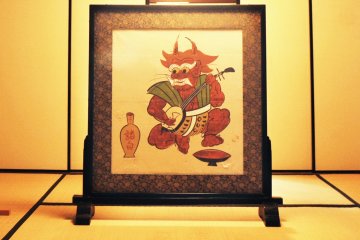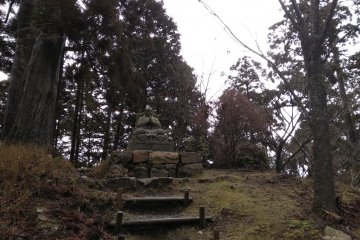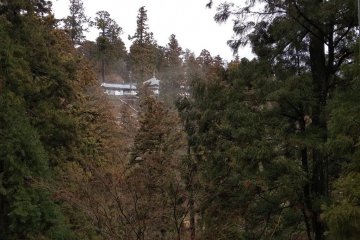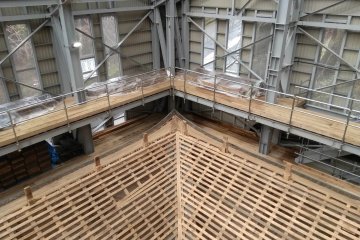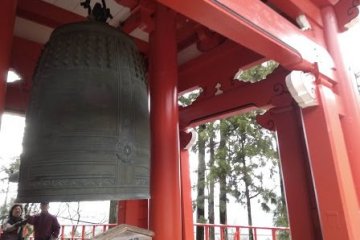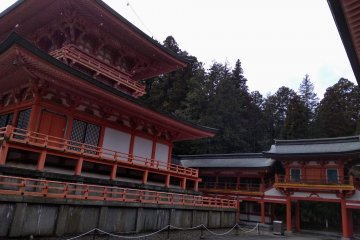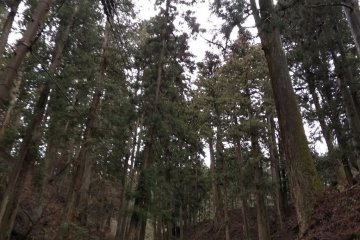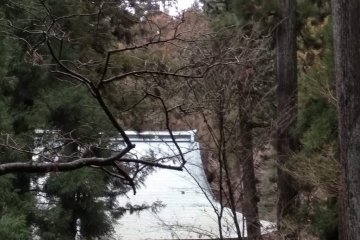I was told All Hieizan is Enryakuji and all Enryakjui is Hieizan. You wouldn’t go up Hieizan, or Mt Hiei, except to visit Enryakuji. The mountain is nothing short of green enchantment, but Enryakuji, a World Heritage Site, is unavoidable, as all the mountain trails and walks will lead to and around this massive temple complex.
Enryakuji would pall in its splendour without its mountain backdrop, and the mountain would lose its primary reason for existing without Enryakuji. At Hieizan, we can see two kinds of architecture, the temples and shrines, then the forests that frame them. Both are timeless, sacred ground. Both their beauties combine into an amazing entity, a veritable cathedral of nature, prayer, and peace, with the same universal message. All nature, religion, mankind, every living thing, are united, are one with the other.
The moment you step off the cable car, the dense silence of the mountains, its rampant, wild forests, dizzying heights of the trees, the only sound the sashaying dance of leaves, builds up the tempo of readiness and anticipation for Enryakuji. Much of the original forests remain, 1,200 years old, moss covered, bark peeled away with age, but still majestic and commanding.
Today our jaws drop that Enryakuji’s domain comprises 150 temples and shrines. In its heyday, there were 3,000.
For a systematic approach to the vastness which is Enryakuji, just follow the relatively clear signs through the trails that connect the stages of our lives. Past, Present, and Future. A shuttle bus will take you around, but much better is the 20 minute walk that allows you to soak in Enryakuji’s lush surroundings. This you can do from your Past, Todo, to your Present, Saito.
You will need the bus, however, to get to your future, Yokawa, which is a 90 minute or so walk one way. The day I went, the bus was not functioning. I thought that was just life. We can never see the Future.
Konpon-chudo, the main temple in the Todo stage, has also closed for renovation until 2025. You can still enter and see a bit of the old Todo, and mainly be impressed by the skills of the artisans involved in the repair work, the precision of the cutting of pieces of wood, and the exact laying them out piece by piece. The whole of the old temple is encased in a wooden frame, buttressed by steel, itself an engineering accomplishment.
Around each stage, there are numerous shrines, kami sites and juzo. Numerous trails radiate from them and connect with each other. Simplified maps are available. Maybe start by isolating what you want to see. Finish these off, and then return to the others. But staying just with the main trail, the main temples, and then only at Todo and Saito, I was already up there over 4 hours. There are steep stairs and stiff climbs. Rest in the greenery, but be careful where you plop yourself down, because it might be a sacred boulder.



